Answers on questions. There was no parade in Brest!
It is clear that I will not dirty our (albeit virtual) pages with this fake. Movie anyone can find himself.
But the fact that the parade was not, I intend to devote a fair amount of space.
I think we should start by defining what the parade is all about.
Parade is a ritual. With the regulations, where everything is written down to the smallest detail. So, if such a parade took place, then there should be a lot of documents confirming this.
The rules must be clearly agreed. According to the regulations of any parade, there must be a commander of the parade and a host. Question: who commanded the parade? Who took it? Based on the fact that the Germans left Brest, the commander of the XIX mechanized corps Heinz Guderian was to command the parade, and the commander of the 29th tank brigades of the Red Army Semen Krivoshein.
If the parade was joint, it means that two flags should be raised above the podium - Germany and the USSR. Since the parade was dedicated to the transfer of the city to the Soviet troops, this option is also possible: first, Wehrmacht soldiers marching under the German flag, then the Germans solemnly lower their flag to the sounds of the anthem, the Soviet flag solemnly rises to the anthem of the Soviet units.
If the parade took place to be, there should be a photo evidence of the event. In the press of both states the event should receive coverage in the appropriate moment style.
The Germans had a newsreel. This Goebbels brew and became evidence for all Russophobes and all sorts of fans Rezun-Suvorov. On the Soviet side, there was no chronicle at all. No wonder, as it were, our units were busy with somewhat different things.
But the photos were taken abound, especially the Germans. And it is German photos that I will cite as evidence. The Germans, they are decent, they have no reason to lie, is not it?
So let's start with the rules. He was absent. It was only the intention to hold a joint parade in the agreement signed by the parties on the transfer of Brest to the Soviet side. Here is this document, who, again, wants, can translate and verify on their own.
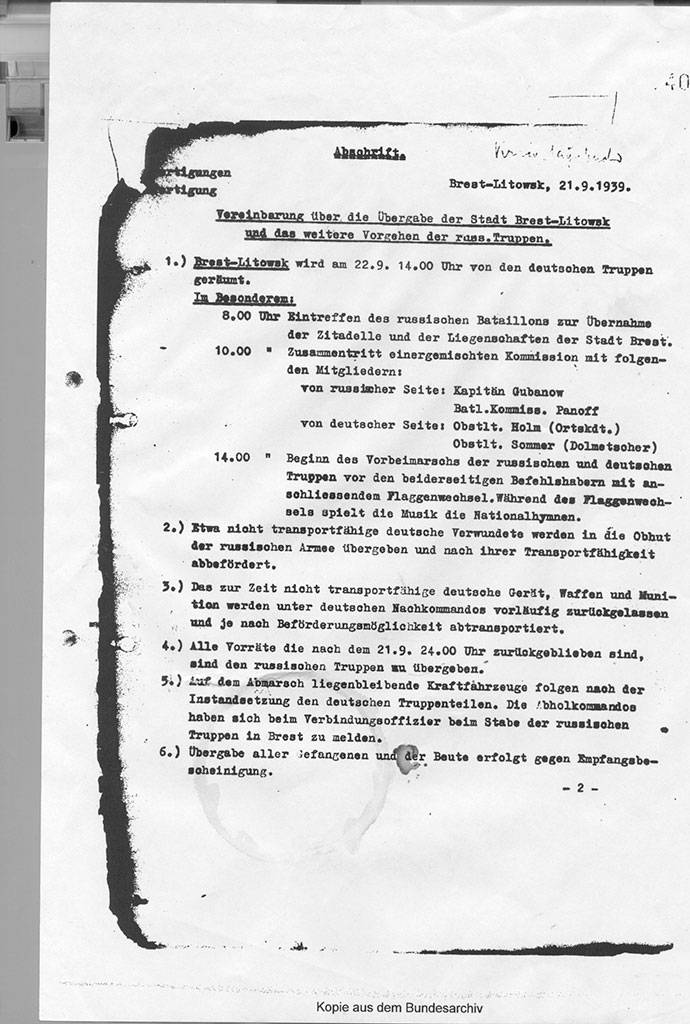
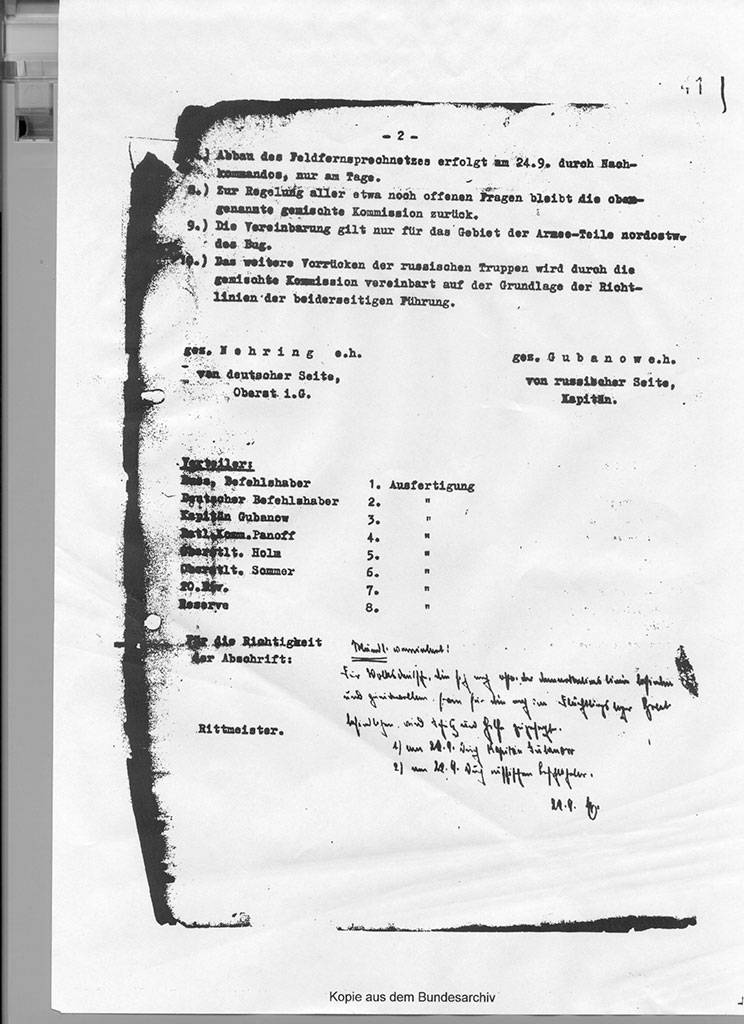
Brest-Litovsk, 21.9.1939. The agreement on the transfer of the city of Brest-Litovsk and the further advancement of Russian troops.
1. German troops leave Brest-Litovsk 22.9 to 14.00.
In particular:
8.00. The approach of the Russian battalion to take the fortress and property of the city of Brest.
10.00. The meeting of the mixed commission consisting of: from the Russian side - Captain Gubanov, battalion commissar Panov; on the German side, Lieutenant Colonel Holm (commandant), Lieutenant Colonel Sommer (translator).
14.00. The commencement of the ceremonial march of Russian and German troops to the commanders on both sides with a change of flag in prison. During the change of the flag, national anthems are performed.
Strange document, to be honest, but as they say, "on bezrybe ..."
The posts of Panov and Gubanov are not indicated, but it can be assumed that they were representatives of the headquarters of the 4 Army (commander Vasily Ivanovich Chuykov). As follows from the document, in 10: 00 a meeting of the mixed commission was to take place, which, in theory, should agree on the rules of the “parade” and the procedure for transferring the city.
However, the first parts of the Red Army entered the city not in 8: 00, as planned, but much later, after noon. No data on the mixed commission meeting in 10: 00 is present. Accordingly, there are no documents signed by this commission.
A copy of the above agreement has the archive cipher BA-MA RH21-2 / 21 and is stored in the Bundesarchive: 2 Tank Army, section: command department, subsection: attachments to the combat log.
In addition, the plan for the handover ceremony of Brest, approved by 21 of September by the commander of the 20th motorized division located in Brest, Lieutenant-General von Victorin, is also kept there. The text of this document, partially affected by fire in 1942 as a result of the bombing of the Berlin military archive, was published by a Polish researcher E. Izdebski.
According to this plan, the procedure for transferring Brest-Litovsk to the Red Army units should occur on September 22 between 15.00 and 16.00 near the building where the corps headquarters is located, in the form of ceremonial passing of parts before the commander of the XIX motorized corps and representative of the command of the Red Army. Read S. M. Krivoshein.
The following units of the 20 motorized division were allocated for the solemn event: 90 motorized regiment, headquarters and first division of the 56 artillery regiment, second division of the 20 artillery regiment. In addition, the 90 regiment exhibited its orchestra, while specifically making a reservation: transport for it must be nearby so that the orchestra could depart immediately behind the column of the first division of the 56 regiment. The units were to be held in the following order: 90 motorized regiment, followed by the headquarters of the 56 artillery regiment, the second division of the 20 artillery regiment and the first division of the 56 artillery regiment.
At the end of the passage in front of the headquarters building there is a change of flag, during which the orchestra plays the German anthem.
Since it was not known whether the Soviet side had its own orchestra, it was supposed that “as far as possible” the German musicians would also play the Soviet anthem.
A little distracted.
Dear readers, you, by virtue of your imagination, try to imagine this epic file:
The true Aryan Heinz Guderian and my fellow countryman, the Voronezh Jew Semyon Moiseyevich Krivoshein (awarded the Order of Lenin for having beaten the Germans in Spain), salute the Soviet flag to the sounds of the “Internationale”, which the military orchestra of the Wehrmacht sounded “as far as possible”!
Difficult, to be honest.
It is good that the 29 Tank Brigade had its own orchestra. Therefore, the Nazis did not have to learn the "Internationale". And the scene of the rise of the Soviet flag, by the way, is not fixed by the Germans in any photograph. As, however, and ours.
We continue. Brest, September morning 22. The already mentioned Polish researcher E. Izdebski published entries from the combat magazine of the 19th motorized corps for that day.
The withdrawal of the corps took place according to the accepted plan. In 8.30 the corps headquarters left Brest. G. Guderian, the chief of staff of V. Nering, the adjutant, the head of the intelligence department and the deputy chief of the operations department remained to hand over the city.
At the same time, the magazine noted that "the Russian battalion, which was supposed to arrive in 8.00 to occupy the city and the citadel, had not yet arrived." Here we are talking about the advanced 172 tank battalion 29 of the light tank brigade, which was only two hours from Brest and was to arrive at 8.00 to receive the fortress in accordance with the “Transfer Arrangement ...”. However, this did not happen: S. M. Krivoshein decided to pull all the forces of the brigade to Brest, which took him about eight hours.
According to the 19th motorized corps combat magazine in 9.00, Brest left the last units of the 3 tank division, followed by units of the 20 motorized division. In 11.00, the journal noted that “There are still no Russians”. Thus, the first two points of the “Transfer Arrangements ...” by the Soviet side were thwarted.
It is still difficult to clearly understand, on his own initiative, the brigade commander Krivoshein did his best to thwart the joint ceremonial passing of the German and Soviet troops, or had clear instructions from the army headquarters on this matter. The Germans, judging by the records in the "Journal ...", saw the reason for the breakdown of the joint march in the eternal Russian disorder.
From the combat magazine of the XIX motorized corps:
"The start of the ceremonial passage on 14.00 was delayed by half an hour due to the lateness of the Russians, who did not change in time the battalion of the 20 motorized division in Wlodawa. In addition, due to the lack of organization on their part, the roads to Brest were blocked by standing Russian companies' tanks."
However, the roads blocked by the "rotates of Russian tanks" could be the result of an acute shortage of fuel and lubricants, as S. Krivoshein repeatedly reported to army headquarters.
The transfer of the Brest Fortress itself took place without our troops at all. "Russians did not come to war". A ceremonial building of the 10.00 infantry regiment took place in the citadel at 76. To the sounds of the Friedericus Rex regiment march, an imperial military flag was lowered from the tower of the Terespol Gate.
Trucks with Soviet soldiers entered the fortress only in the 12-30 area, through the Kobrin gates. In the pictures from the album of a German photographer, this is quite distinguishable.
The transfer of the citadel was carried out by the commander of the second battalion of the 76 infantry regiment, Lieutenant Colonel G. Lemmel. On the Soviet side, the fortress was received by the assistant chief of staff of 29 of the light tank brigade, Captain I. D. Kvass.
Captain I. D. Kvass (in a leather jacket) and commander of the 2 battalion of the 76 battalion, Lieutenant Colonel G. Lemmel (on the right is high in field cap). The photo was taken near the serf hospital, so the Polish medical assistant (in the Confederate) takes part in the conversation. At that time, more than 900 wounded Polish soldiers and officers remained in the fortress.
When the 29 units of the light tank brigade entered the city, it is not known for sure, but it happened exactly before the beginning the ceremony. From here and numerous tanks on the streets of Brest, captured in Germanic photographs and frames of German newsreels.
According to the memoirs of S. M. Krivoshein (excerpts from the manuscript published by V. Beshanov), before leaving for Guderian's headquarters, he gave the command to introduce battalions into the city in 14 hours. Perhaps it was so. Coming out of the headquarters, he saw a column of his tanks.
The pictures show exactly this moment: SM Krivoshein meets the forward battalion of the brigade at the headquarters of the XIX motorized corps. These shots are often used as “irrefutable” evidence of the participation of the Krivoshein brigade in a joint parade with the Germans. In fact, this is proof that the 29 brigade tanks were passing along Unii Lubelskaya Street just by the headquarters before the beginning the ceremony. Notice the second shot at the flagpole with the German flag for now. there is no tribune. She will appear later.
Then again turn to the German chronicle.
From this series of shots we can single out the main thing: Soviet tanks entered the city beforehow the Germans left it. So, the Germans who leave, who are waiting for the moment of the beginning of the passage. Photo sessions, selfies and all that. Soviet tanks just stand on the streets of Brest.
And here's another photo. Here, as you can see, the German orchestra, the Soviet orchestra of eight fighters-regulators and ... a crowd of our tankers. Of course, fans of the "correct" stories I can argue that not all tanks from the 172 battalion of the 29 brigade took part.
I note that in the tank battalion the light-tank brigade was around 40 tanks in the state. This is 120 man crews. It is clear that not everything is here. Someone must remain in the tanks for protection.
Nevertheless, the photo shows that our tankers quite calmly watched the passage of the German troops and were not particularly going anywhere. Here is another photo from another angle.
And one more shot. As the most deadly argument of throwing professionals into our history.
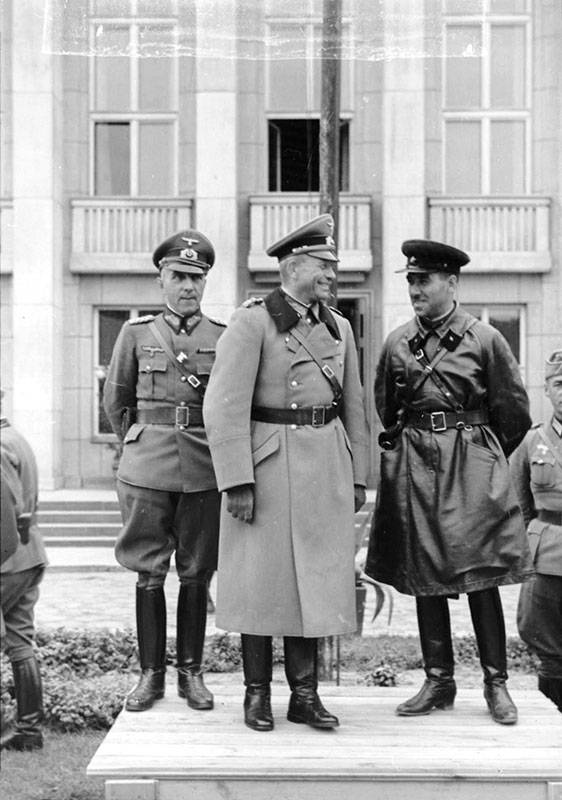
On the podium, the commander of the 20-th motorized division, Lieutenant-General M. von Victorin, the commander of the XIX motorized corps G. Guderian, and the commander of the 29 th light-tank brigade of the brigade SM Krivoshein during the transfer of the city. So what? And nothing. The fact of holding a joint parade does not confirm this, if that. The same goes for the mentioned “chronicle” from Dr. Goebbels. The passage of the German technology past the so-called tribune is visible, and yes, the representative of the Red Army Semyon Krivoshein, who by his presence confirms this fact, is quite visible.
But why then there is not a single frame of the German newsreel, not a single photo, which captures this trinity and the passing Soviet tanks? Ah, the film, apparently ended, right? All at once ...
Meanwhile, Krivoshein in his memoirs recalls this:
"In 16.00, I and General Guderian went up to a low rostrum. We were surrounded by German staff officers and photographed endlessly. The motor vehicles of motorized regiments went. Guderian greeted each car, putting a hand to the headdress and smiling."
So, apparently, they spent everything on their own ... It’s familiar as ... According to Ukrainian events.
And so I would like to see at least one T-26, who drove past the commanders as part of the "parade" ... But, apparently, no luck.
By the way, we'll take a closer look at the last photo. Who is there in front of the podium? There is still thanks to some eyewitnesses, whose testimony at one time Rezun led. Also, as a good proof of my rightness, for which this scum thanks.
“According to eyewitnesses,“ those who participated in the event crews of Russian tanks and the 8 man-sized orchestra made a very mediocre impression. Strikingly assorted and sloppy uniforms. "
I was not stressed in vain. Eyewitnesses, unlike Rezun and the sect of his fans, were not scum. They were just eyewitnesses. And noted the presence of a small orchestra and "crews of Russian tanks." Crew, not tanks. Yes, and dirty tanks also noted.
And why should they be clean after the 90-kilometer march? This applies to tanks and crews. They only appeared in Brest, in contrast to the Germans, who had a shaft to clean up. Two weeks.
But we approach the most interesting. To the answer to the question why, against the background of the rostrum, only German units are passing. Where are the photos of Soviet units passing by G. Guderian and S. M. Krivoshein?
And the answer is simple, like a shot in the head to all fans of Goebbels and Rezun: there was no passage of the Soviet troops, since the action developed according to a scenario that imposed Guderianu Krivoshein.
The tankers of the 172 battalion, who entered the city before the beginning of the passage of the troops, were present at the ceremony exclusively as spectators. It is they who stand there, just almost opposite the tribune, to the left of the orchestras. Ugly such ... Nothing, they are in Berlin and the beauty of the form did not shine.
But in the German newsreel there is not a single frame of the passage of our tanks, not only against the background of the rostrum, but also against the background of the Krivosheinsky brigade of tankers standing in the line!
But here, please, especially those who are not too lazy about the Goebbels brew to see how these moments were glued together.
Ask, and the rest? And the others either just entered Brest, or having entered, quietly hung out on the outskirts and received bouquets and other things from civilians. While waiting for the "allies" solemnly dumped from the city.
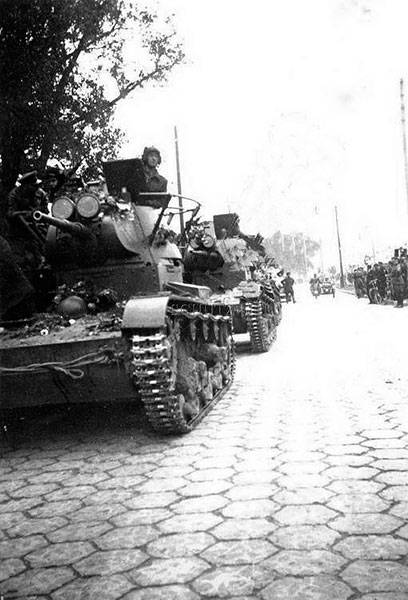
And then what about the German newsreel? And nothing. The video was made primarily not to inform the Soviet people, but to calm the German population, who feared a possible war on two fronts. Secondly, these cadres could have influenced to a certain extent the ruling circles of England and France, by showing what a powerful ally came from Germany.
And the fact that he became an argument in the scoundrels and scum of history - this is the third question.
A modern person, and most importantly, an intelligent one, will have enough of a couple of views to make sure that this “documentary” masterpiece of the film studio to them. Goebbels is nothing like the usual skillful film assembly. Cutting out the necessary plots superimposed on a single sound series creates the illusion of a single dynamic action in the viewer.
One must be either weakly seeing, or badly upset, to deny the obvious. Everyone can see for himself: in the German newsreel There is not a single frame, where against the background of the tribune with Guderian and Krivoshein Soviet tanks were filmed. All Soviet combat vehicles, allegedly participating in the so-called parade, are in fact were shot long before the start ceremonial march of German troops.
And to prove it is very easy. Cards in hand give themselves lovers leave with mud in our ancestors. Simply, they thoughtlessly copy-paste photos, replacing the level of gray matter with their own uprightness and nakedness.
Here, they say, here it is, the parade! Here are the Soviet tanks, here are the German troops, here is the area! And here are the signatures of that time for you under the pictures, which are black and white painted: PARADE IN BREST !!!
I feel sorry for these "professors." Honestly, sorry. But I will not impose on them, just say what I saw. Without looking at the signature. For you know, you can write anything on the fence, but behind the fence such things can happen ...
As I see, in the captions to the illustrations we are talking about a joint parade. German-Soviet. Military. These are perhaps the most common photographs that, according to outright nonhumans, are "iron proof" that there was a joint parade.
If someone fanatically believes in this nonsense, I feel sorry for him too. It is a pity that he spent so much time on this scribbling. Just this analysis is designed for a person who knows how to think, and not to use a provocative picture as an icon. But here, yes, to each his own.
Bottom photo specially duplicated, it is in excellent quality. And on it is just the answer to all questions.
In the picture I see the T-26 tanks on Union Lubelskaya Street. They pass by the headquarters of the XIX motorized corps of Guderian. On the left is a German column, or stopped, skipping tanks, or just waiting for an order to advance.
And why did it suddenly turn into a parade? And in general, well-versed, tell me, is it like a parade? Just a little bit? I, twice trampling Red Square in Soviet times, declare: it does not seem at all.
The main question is: where did the “tribune” go, from which S. M. Krivoshein and G. Guderian allegedly “took a joint parade”? And where did they go?
Well, for example, Guderian spent his troops and dumped. And Krivoshein? Vodka went to slap him for all the good and successful parade? Spitting on their tanks, like, they will drive themselves?
And the platform, which depicted the rostrum, stood right in front of the flagpole ... Of course, we can say that "the platform could have been removed already." Of course, could be removed, but only at the end solemn ceremony of changing flags, which completed the procedure for transferring the city! And after the departure of the Germans. And so it turns out that the Germans, otpardivshis, for some reason stuck in the square, the command went to swallow schnapps, and our tanks just continue to ride along the main street. A lot of them, tanks, the command decided all 140 units not to meet and not to greet.
It seems to me that someone here is superfluous if this is a parade. Or the Germans, or ours.
And further. Look carefully at the flagpole. There, sorry, hangs the military flag of the Reich. And if this is a parade, if our tanks are already marching in a solemn march, then he has nothing to do there. By that moment it should have been removed and our flag should be raised instead. Something like that...
But the snapshot is real, "as it was."
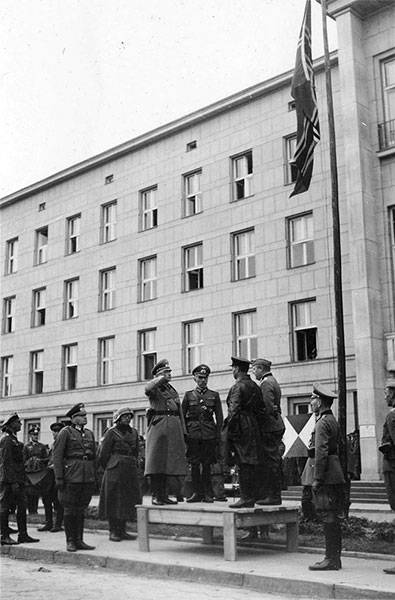
The platform-tribune, as you see, did not run away completely. The German flag is lowered, and on the left you can see (if you really need) a Soviet soldier with a red flag to be raised.
Here's another. Here is what I see. I hope you see it too.
And here is the last snapshot of this day. The commanders said goodbye and dispersed. Krivoshein, of course, remained in Brest, and Guderian went to Zambrov, where his corps was relocated.
And the next day, September 23, in 11.50, Krivoshein sends a report to the 4 Army headquarters as follows:
"To 13.00 22.9.39, the team after 90 km of march concentrated at the entrance to the city of Brest-Litovsk. In 16.00 (exactly according to the time set by the protocol) entered the city with the brigade, where [b] underwent the procedure of replacing flags and greeting the German troops. From units the German army remained separate parts of 12.00 23.9, which are already leaving. The night passed quietly in the city.The infantry - the regiment T. Fomin arrived from 22.00 22.9 to 10.00 23.9. The armored train arrived at 22.00 22.9.
He put the requirement of the Germans' commanders to release the line Vysoko-Litovsk, Klets no later than 12.00 24.9.
The condition of the mat [main] part of the brigade at the limit of wear, the machines worked on average 100 hours without major inspections. It is necessary to give for the brigade 3 of the day to put in order the mat [real] part.
Urgently send spare parts for T-26, especially motors (need 45). Still bad with gasoline and oil. I ask you to send a tank with fuel and lubricants to the [rail] rail [orog].
The mood of the people is great. There is no loss. There are no immoral phenomena. The organization of power is very slow and bad. Our people providing this, no. It is necessary to urgently send the necessary workers to Brest. The Germans looted all shops and institutions, even with barracks and a fortress. The brigade located in the barracks of the Polish Armored Division. Waiting for your order. "
Here you have the last answer to the question. Krivoshenin welcomed the German troops leaving Brest. As can be seen from the chronicles, alone. And notice how few letters he dedicated to the very procedure of transferring the city. From the report it is clear that he had other concerns. Meanwhile, the command of the 4 Army one of the tasks imputed the need to report all cases of contact with the Germans.
Absolutely nothing is said about the passage of the Soviet troops and in the combat magazine of the XIX motorized corps.
The statement itself that there was some kind of secret agreement on the parade, then 22 September 1939 Soviet commander Semen Moiseyevich Krivoshein did everything in order not to dirty the honor of his Homeland and the Red Army with a joint procession with the Nazis.
I sincerely regret that on our pages a citizen of Israel and, perhaps, even a Jew, in a completely obscene attempt to spit in our history has resorted to such evidence as Dr. Goebbels’s concoction. It was the one who called and argued the need to destroy the Jews as a nation.
I really feel sorry for you, Oleg.
And it is even more pleasant for me to know that those who did not allow the coven with a joint parade with the Nazis, myself or on instructions from above, were my countryman, the son of a handicraftsman, a seamstress, 100% Jew, Semyon Moiseevich Krivoshein.
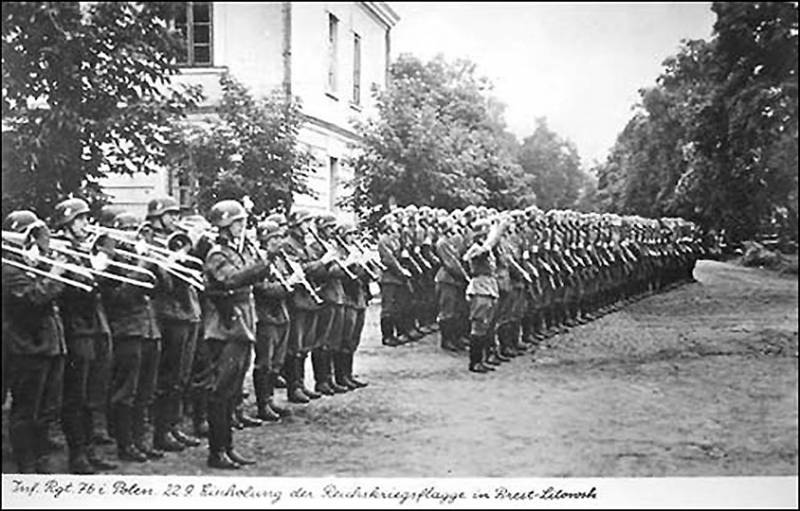
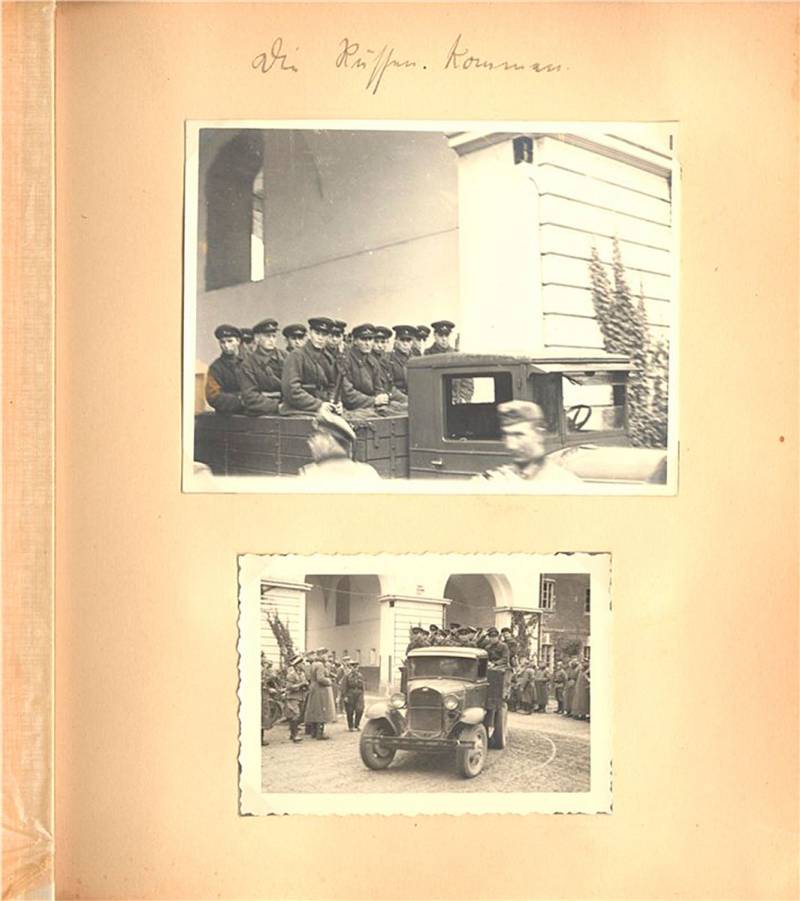
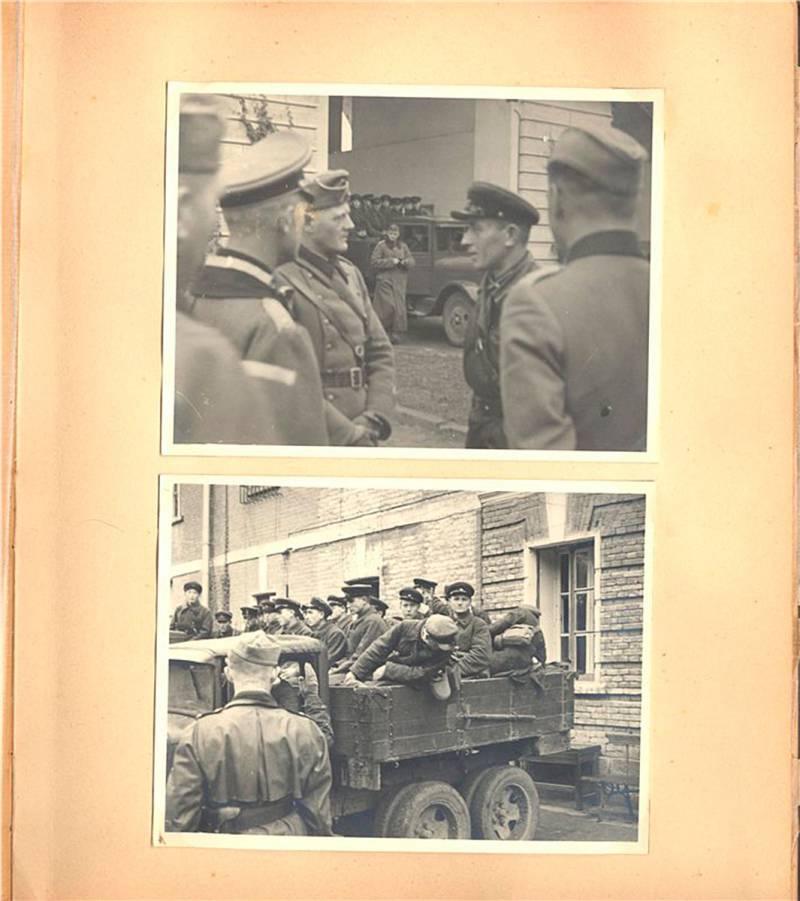
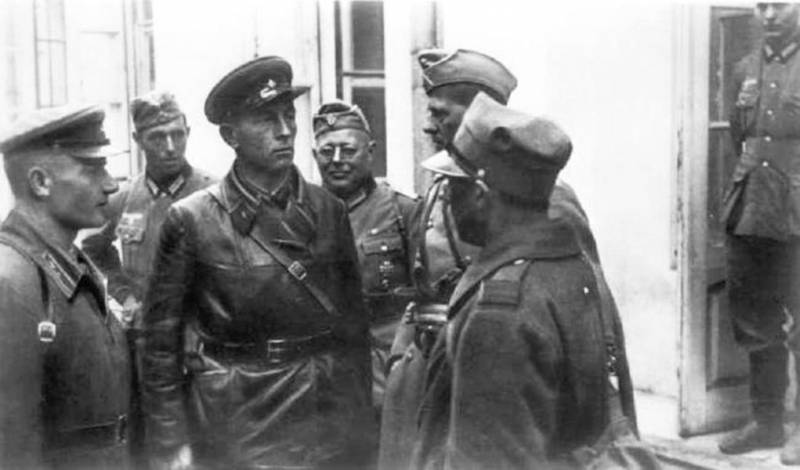
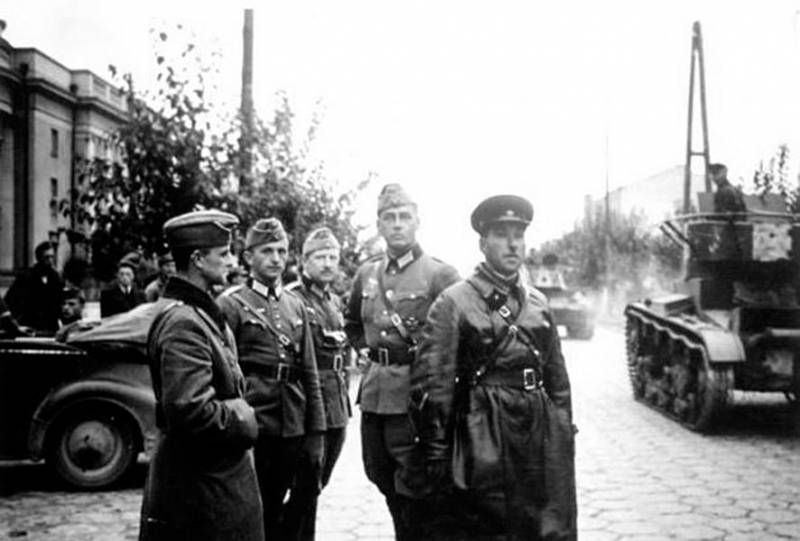
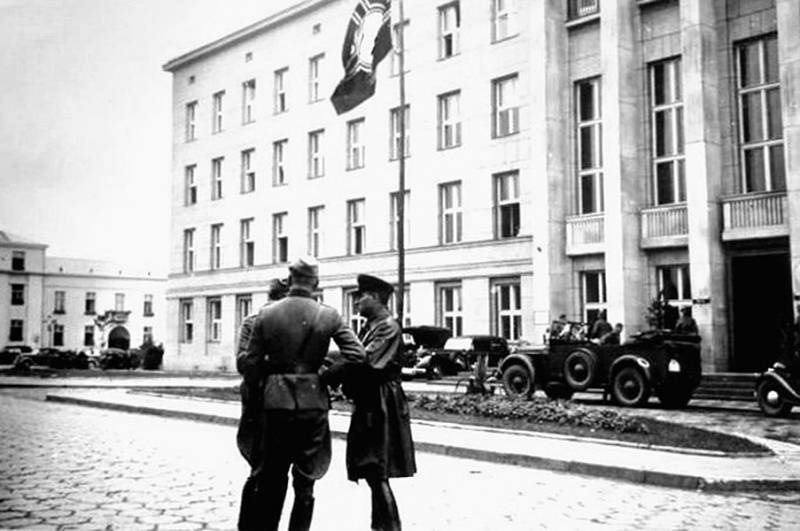
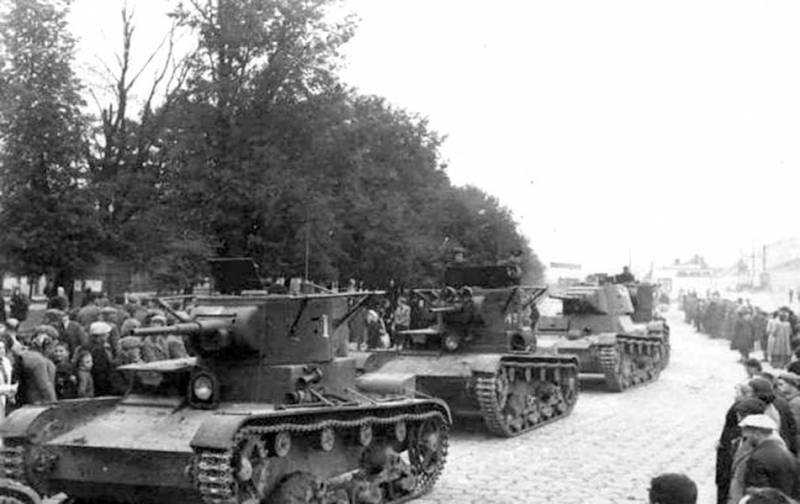
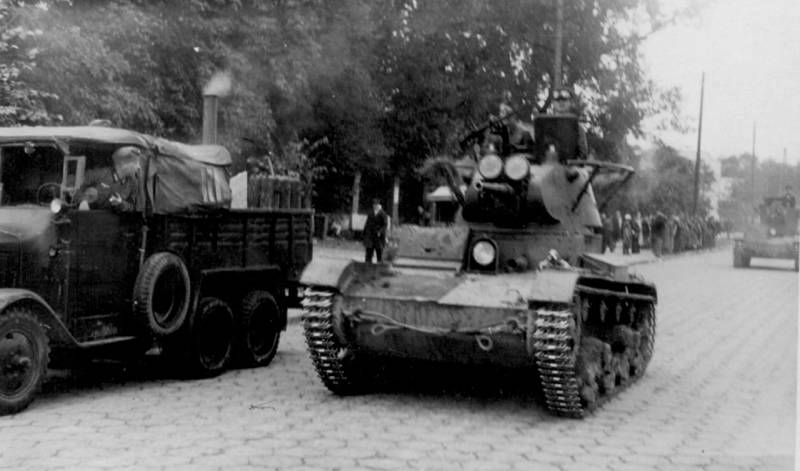
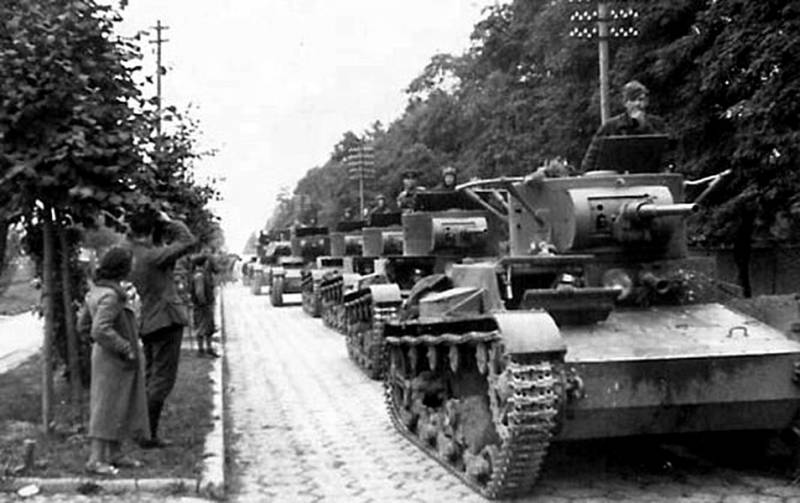
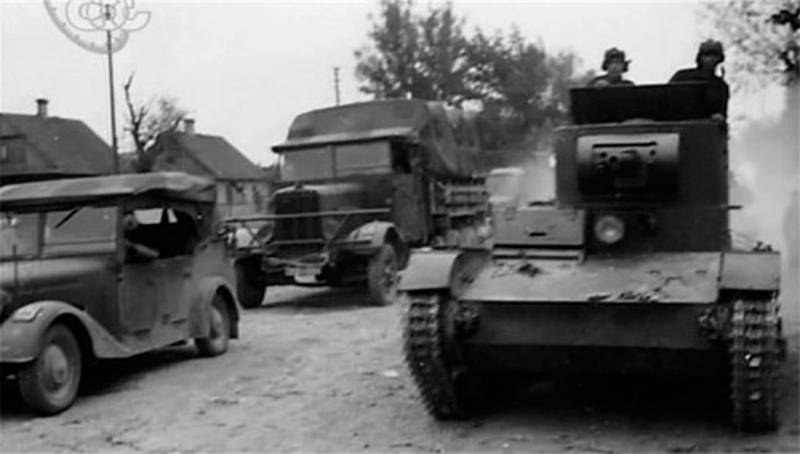
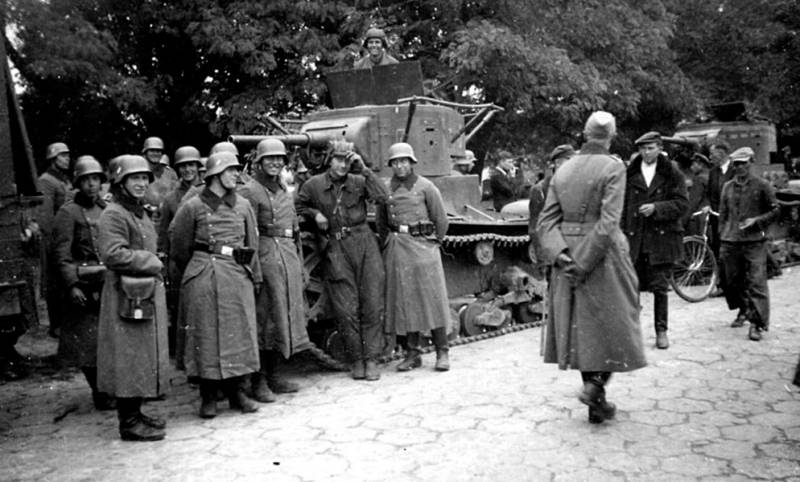
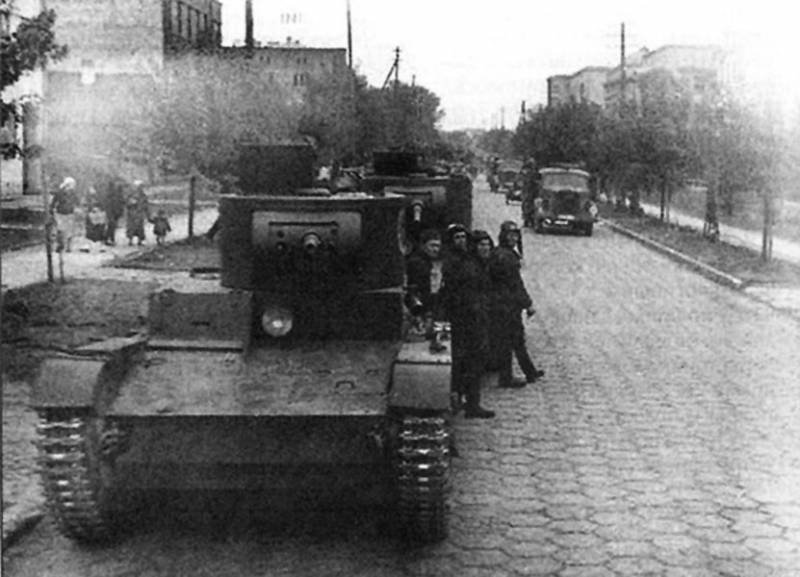
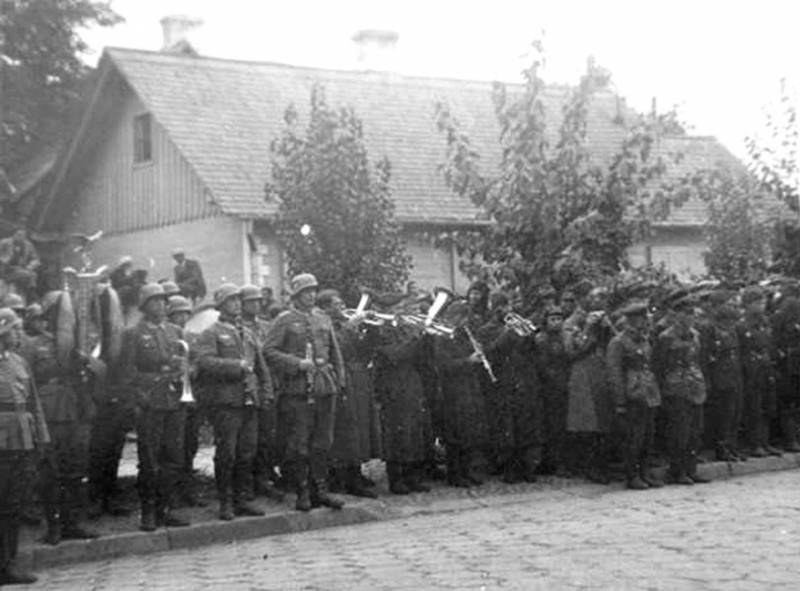
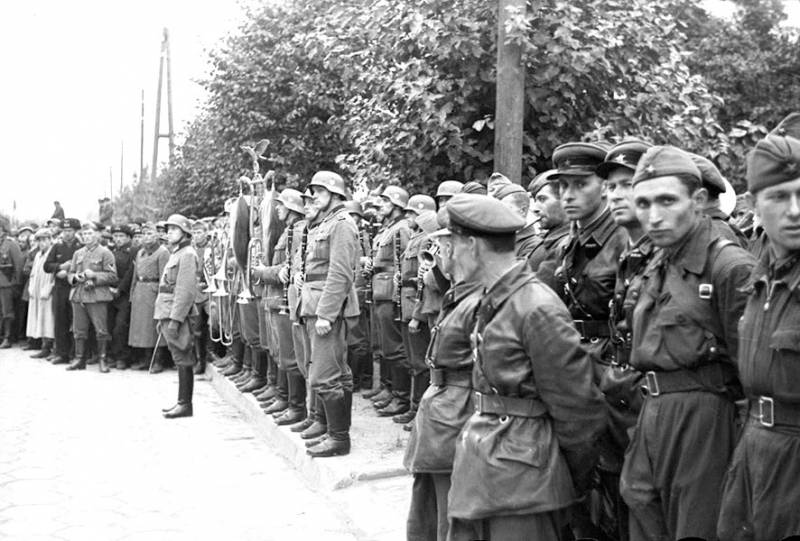
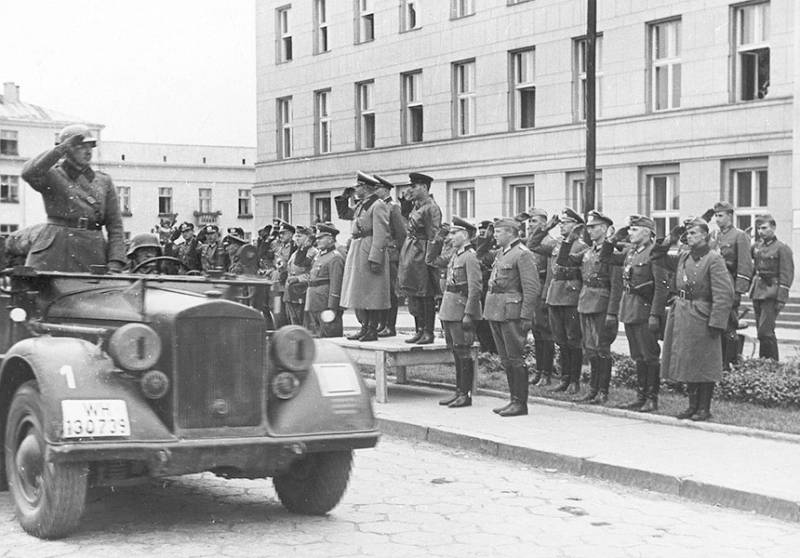
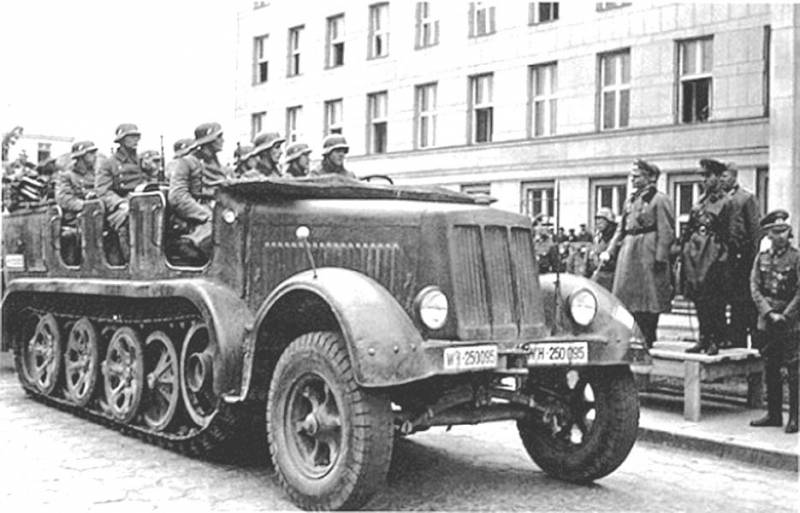
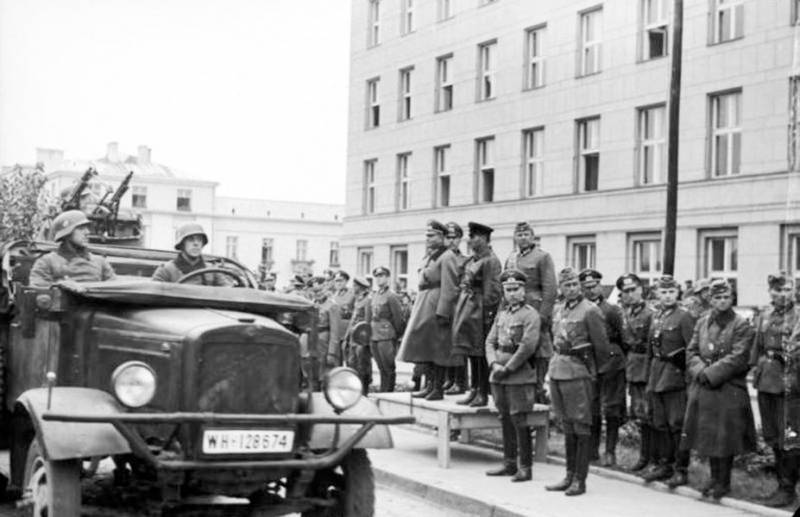
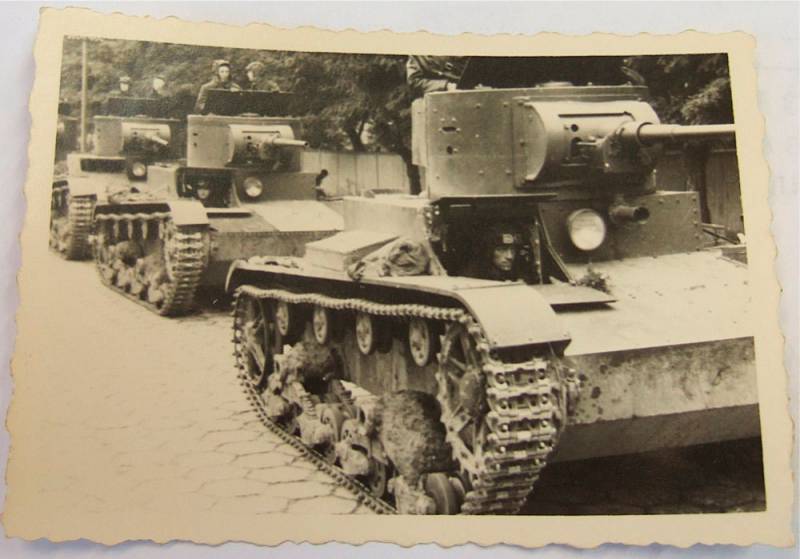
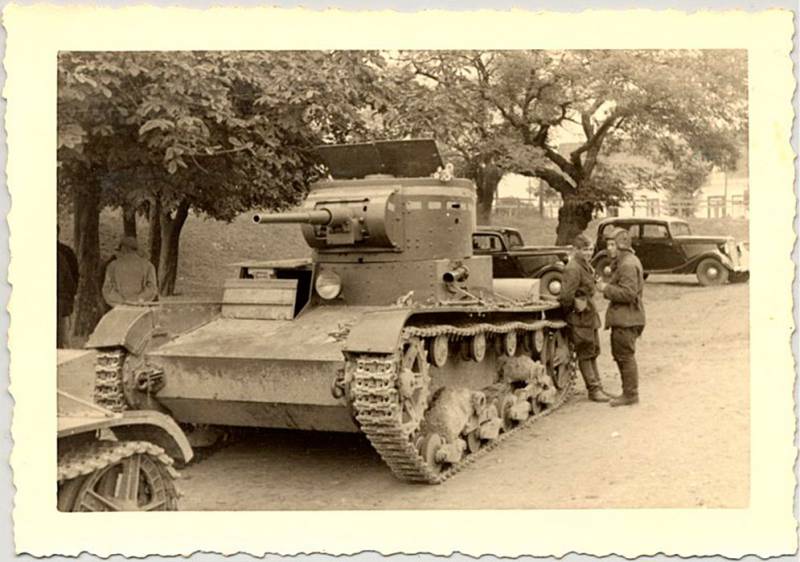
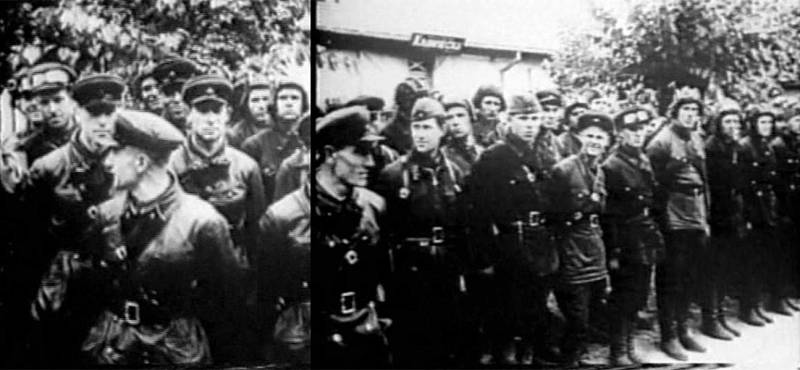

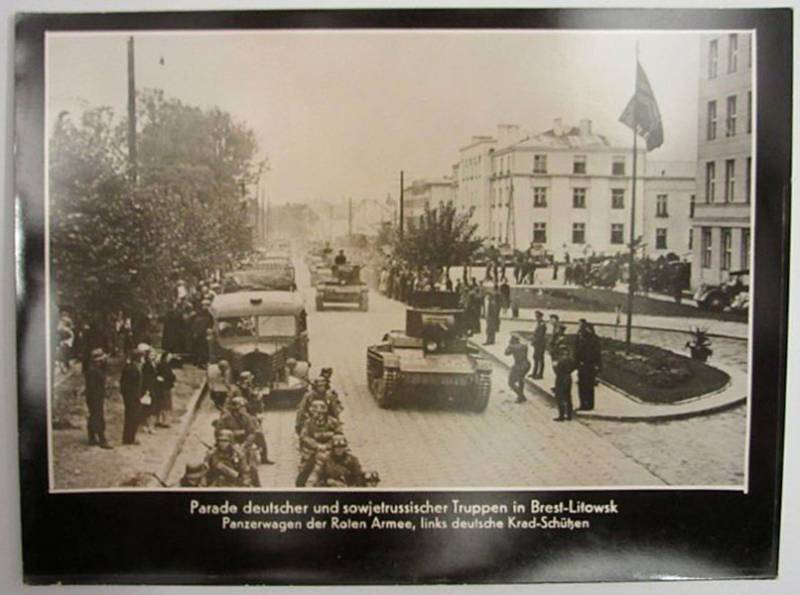
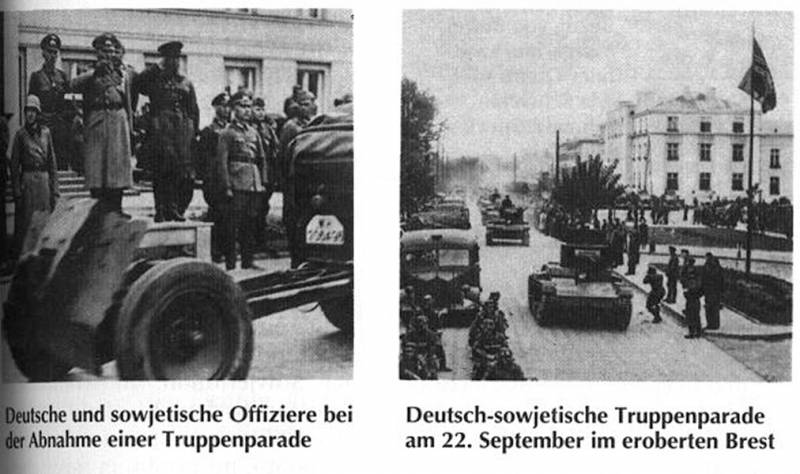
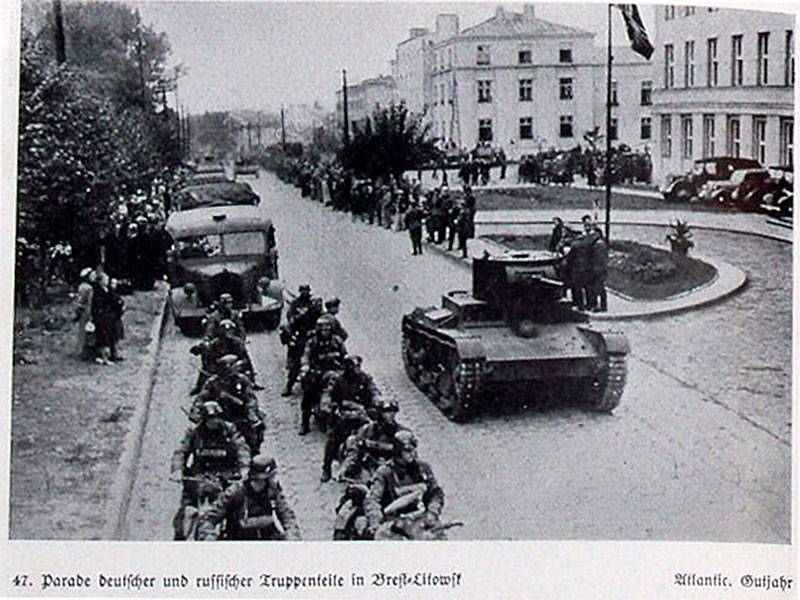
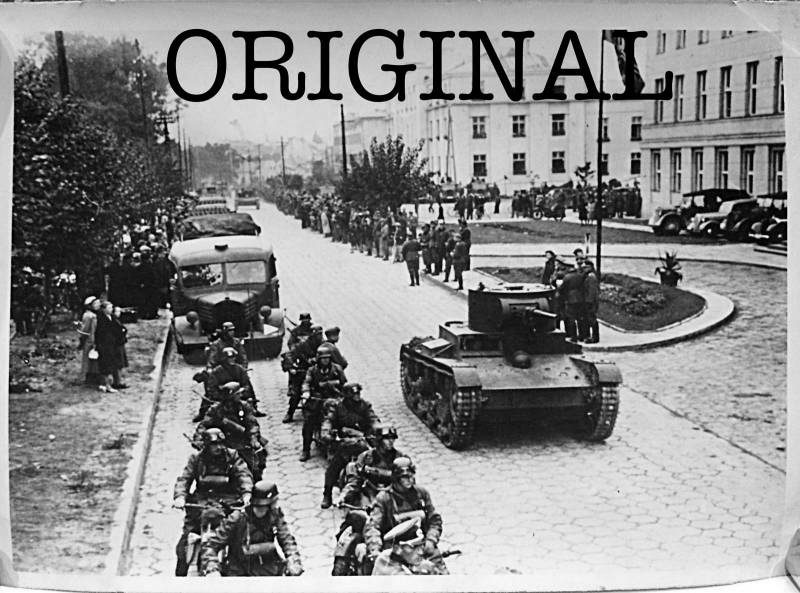
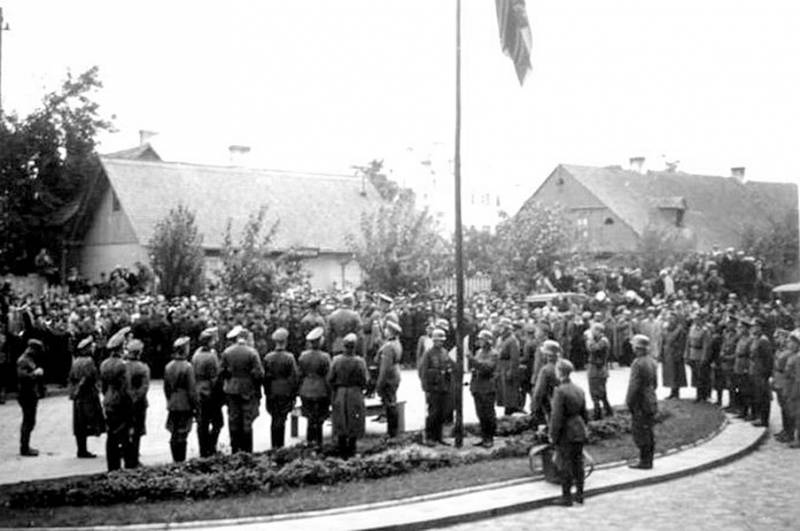
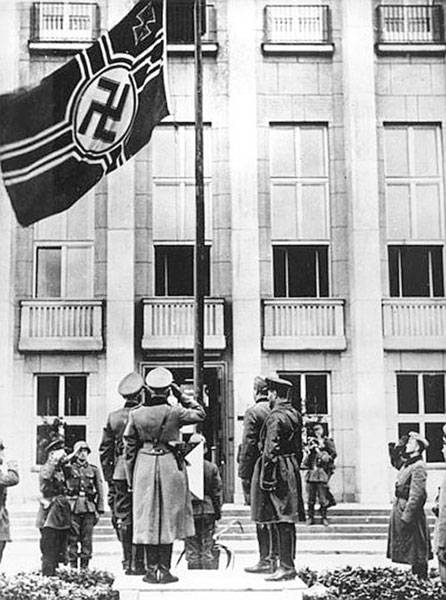
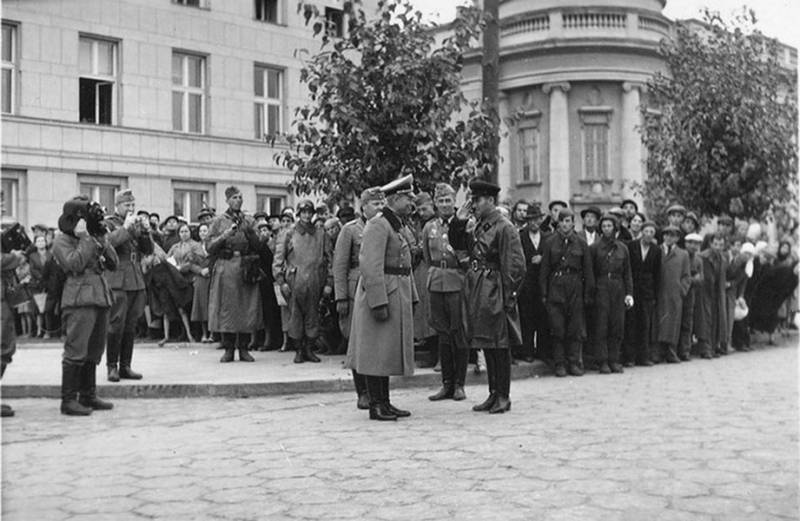
Information